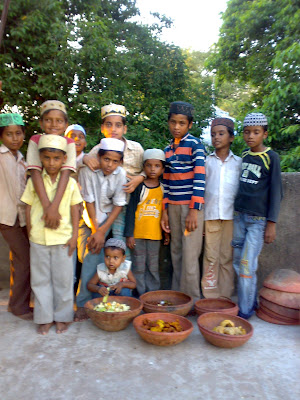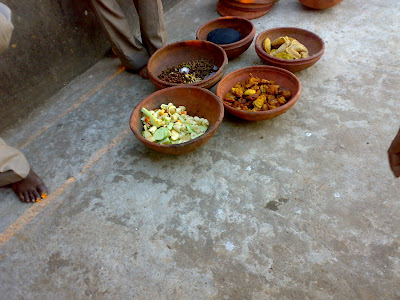By Tarique Anwar, TwoCircles.net,
I am in Muslim dominated Dargah Shah Arzan area of Patna to see how people here do their Iftar arrangements. There is a tradition of collective Iftar usually arranged in mosques in the month of Ramadan. The mosque of this area is one of them.
I entered the palatial three-storey mosque which seemed to me no less than a palace. On its ground floor some people were offering Namaz and some were reciting the Holy Quran. I went upstairs and reached the first floor and then second floor.
On the floor I met Md Shamim. He was collecting Iftar brought by people living in the locality. Shamim, a peon in a government high school, told me about the whole arrangement of the Iftar. He said that it was in his daily routine to collect and arrange Iftar in this mosque everyday in the holy month. When asked about the purpose of Iftar of this kind in mosque he said its main aim is to arrange Iftar for travelers and those who observe fast but are not in position to arrange for it.

Children gathere for iftar in Masjid at Dargah area
“Almost 70-75 people take part in this Iftar every day. Of them 12-15 are travelers. The rest of them are people of nearby houses and majority is of children. Some people break fast here bringing Iftar with them. Some people only send Iftar in mosques without their participation only to help those who are either outsiders or not capable to arrange for their Iftar,” said Shamim talking to TwoCircles.net.
Today I became a part of this Iftar party and also broke fast with them. Most of the participants were from poor family background or were outsiders who stayed there to spend night. The menu of this small feast was very rich. Everything was kept in earthen pots. In each pot 2-3 people were eating together.
Before Iftar I spoke to Md Fakhruddin who is Imam (cleric) of this mosque for the last 10 years. Talking about the arrangement of Iftar in all mosques he said that it was meant to provide some food to the outsiders and poor people. But very disappointingly our society considers it below their standard and people from the rich class don’t come to mosque to break fast with their brothers in Islam, the Imam said.
It was the condition of the mosque located in Muslim dominating area of poor background.

A glimpse of iftar
Now I was curious to see the arrangement for Iftar in a mosque located in better off Muslim area.
The next day I went to Patliputra Colony, a paush colony resided by doctors, engineers and high ranking civil officers.
I remained in the mosque for nearly 45 minutes silently observing what was taking place. In fact, there was nothing taking place. The mosque was almost deserted. It was a few minutes to Iftar but there was silence all over the mosque. Apparently there was no one in the mosque except the Imam. After a short search I got to see the room for Imam. He was alone in his room and waiting to break fast. He invited me at Iftar. During Iftar I asked “Who brings these things for you and muezzin (the person who calls azan). He said, “Some people of this colony send these things only for me. If anybody comes then we share and break our fast.”
The main difference which I observed in these two mosques was the hustle and bustle of the first mosque and the silence enveloping the second mosque. This was because of the difference or better say clash between tradition and class. Hardly folk tradition is followed by class people. Collective Iftar in mosque is just a tradition. A good tradition, indeed.

